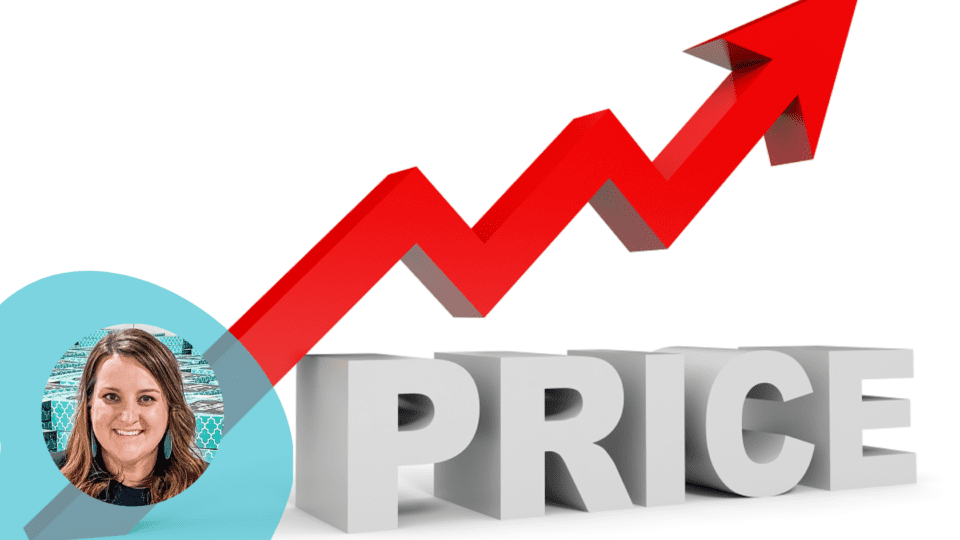Prices have rapidly increased on literally everything. According to a 2022 survey from the NFIB, 62% of small business owners have reported that inflation is their biggest challenge this year. And of those, 86% have passed along those price increases to their customers. Higher prices are unpleasant, but they are becoming the new norm.
Widespread inflation and your own increasing costs may have you wondering when is the right time to increase your prices and how to communicate those increases to your customers. No one wants to raise prices, but with tighter profit margins, higher wholesale prices and increased shipping costs, it’s necessary. If you don’t raise your prices, your business may not survive.
Once you decide to increase your prices, it’s time to determine how to communicate those increases to your customers. The best way to communicate price increases, and even whether to communicate them at all, depends on your business and the type of customers you serve.
A Price Increase can be a Big Marketing Opportunity
If you have recurring customers who have an ongoing subscription to a product like a subscription box, a VIP membership like Amazon Prime or a replenishment item like coffee, printer ink, etc., a price increase can actually be a marketing opportunity. Setting up a “last chance” promotion gives people a reason to buy right then and lock in the current price before it goes up. This type of offer creates urgency and gets a rush of new signups before the price increases.
Communication is Key When Increasing Prices Across the Board
As a business owner, you always need to consider your costs. If your current pricing model is no longer profitable, you will need to increase prices for everyone. Communication is key here. You don’t want to hit your customer’s card or bank account with a price increase automatically without overcommunicating that it is coming.
3 steps to communicate a change:
- Notify your customers via email first. Let them know the new price and when the increase will hit their account. Give your customers a few weeks to 30 days’ notice.
- Make an announcement. After you notify all your existing customers via email, make a formal announcement on social media, live or through posts. Email open rates tell us that not all of our users actually see them, so this step is necessary.
- Be transparent with your customers. Explain why an increase is necessary. Most people understand that rising costs lead to higher prices. It’s also important to show value. How will an increase help you serve your customers better?
You Don’t Always Need to Communicate an Increase
While the advice I provided above is valuable for communication with reoccurring or subscription customers, there are going to be a lot of situations as retailers where you don’t want to communicate an increase. In fact, in these situations, making an announcement on social media could turn customers off or leave them with negative feelings about your brand.
Think about it. Does the grocery store make an announcement every time the price of milk and butter goes up? No, they simply change the sign. The same goes for you and your retail business when it comes to one-time product sales.
3 steps to slowly change your prices on everyday collections:
- Increase prices on new items first. Increasing the price on new items is a no-brainer. As T-shirt costs soared during the pandemic, I needed to make sure I was still maintaining my profit margin. The reality is that if costs went up, so did my pricing.
- Adjust your older inventory to match. As my customers got used to the pricing on the new items, I slowly went back and adjusted my older inventory to higher prices as well. It’s important that there isn’t an obvious gap on old pricing vs. new pricing.
- Change your free shipping threshold. As a small business owner, you know that free shipping isn’t really free. As shipping costs rise, free shipping costs your bottom line more than ever. If your pricing model isn’t working, consider changing your free shipping offer to a dollar amount, like free shipping over $50 or $75, and flat rate shipping for everything else.
Don’t be afraid of increasing your prices. If you want to be successful long-term, it’s important to take a deep look at your monthly profit and loss statements and do what’s necessary for your small business to thrive. And let’s be real. People don’t pay that much attention to slight price increases. Not one of my customers said anything about the price of my T-shirts going from $29 to $32. Basically nobody noticed, or if they did, they chalked it up to rising prices everywhere. Don’t make a big deal about it. Adjust and move on.
Sarah Williams is the CEO and Founder of two seven-figure businesses, Framed by Sarah and Launch Your Box, where She has worked with thousands of subscription box owners and those wanting to start a subscription box, providing in-depth training that takes them through each step of starting, launching and growing their business. She is also the host of Launch Your Box Podcast, which debuted in February 2021. The podcast has already been downloaded over 150K times and is in the top 1% of podcasts globally and in the top 20 entrepreneurship podcasts in the U.S. Connect with her on Facebook @subboxwithsarah.




